Staircase can make a statement. Architects and interior designers take this utilitarian device to a whole new level, transforming it into an architectural centerpiece in the context of a residential scheme.
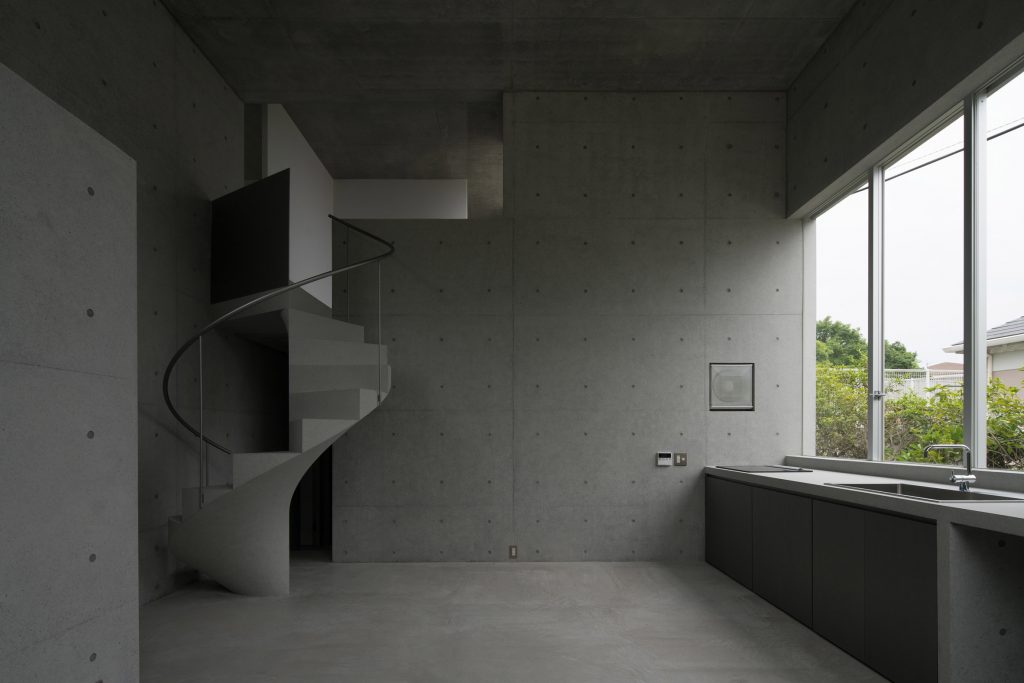
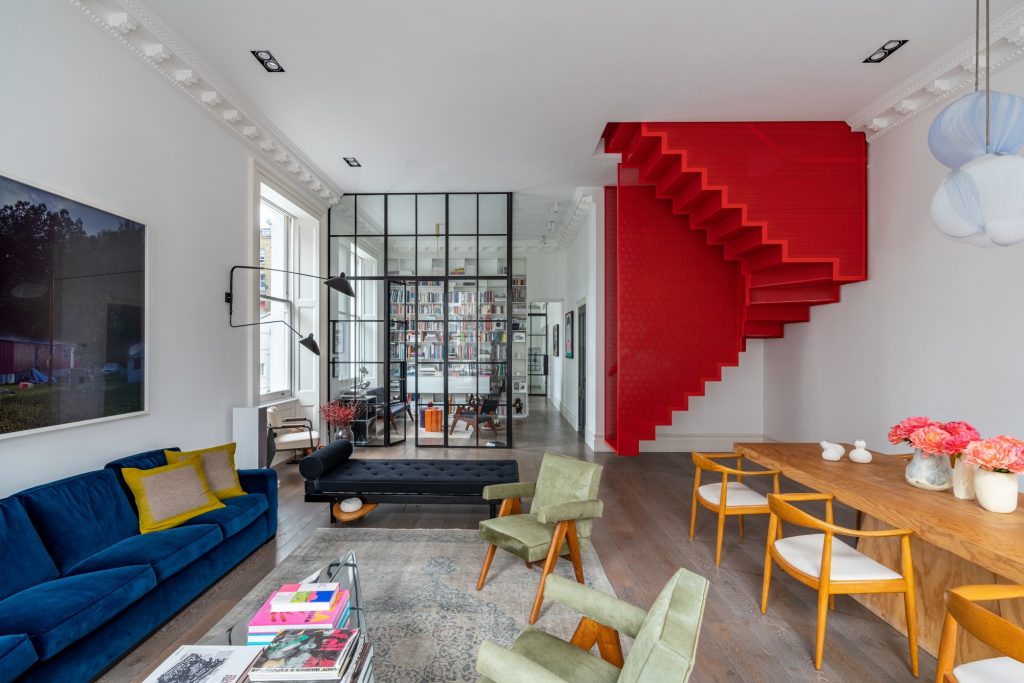
Elvaston by Michaelis Boyd
Michaelis Boyd, architecture and interior design practice with offices in London and New York, was inspired by the floating red “Staircase-III” by Doh Ho Suh which was exhibited at the Tate Modern when they created a feat of stairs to connect two separate first and second floor apartments in London’s Georgian building into one large maisonette.
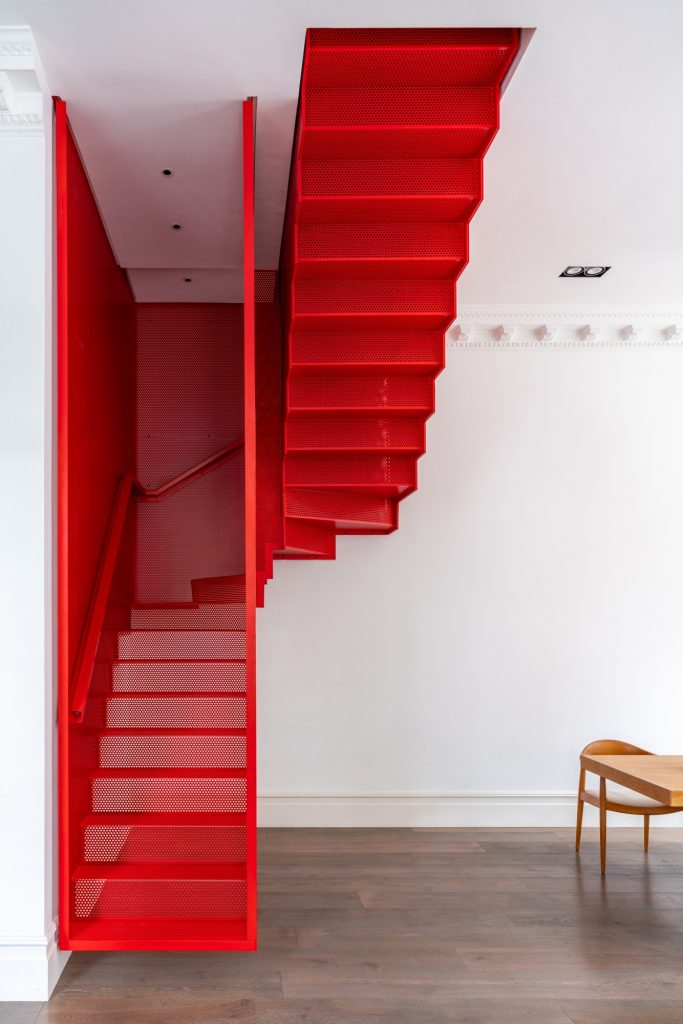
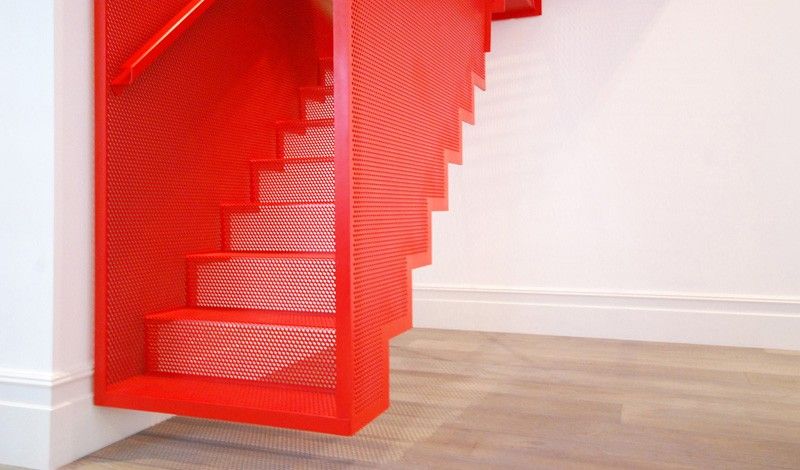
Elvaston by Michaelis Boyd
To reflect the creative personality of the clients and their children who enjoy the social and open nature of horizontal apartment living, the team designed a striking, but ethereal and almost sensorial sculptural staircase made from perforated red steel, which floats just above the living room floor.
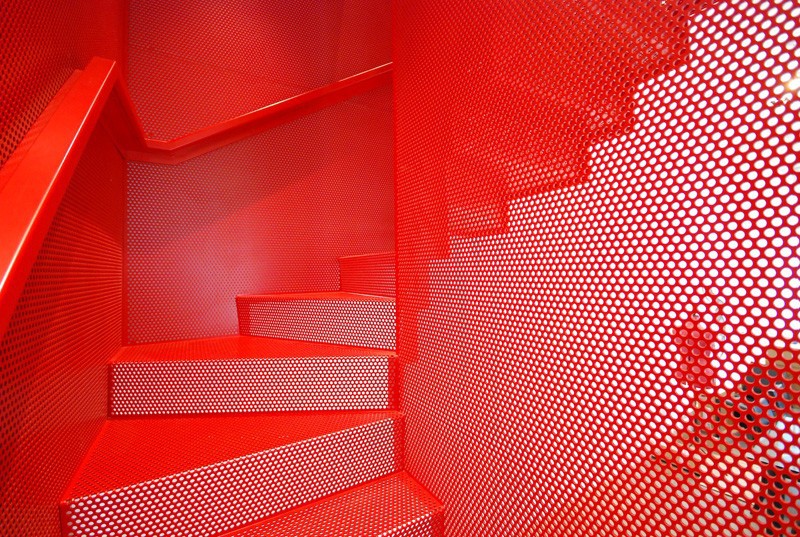
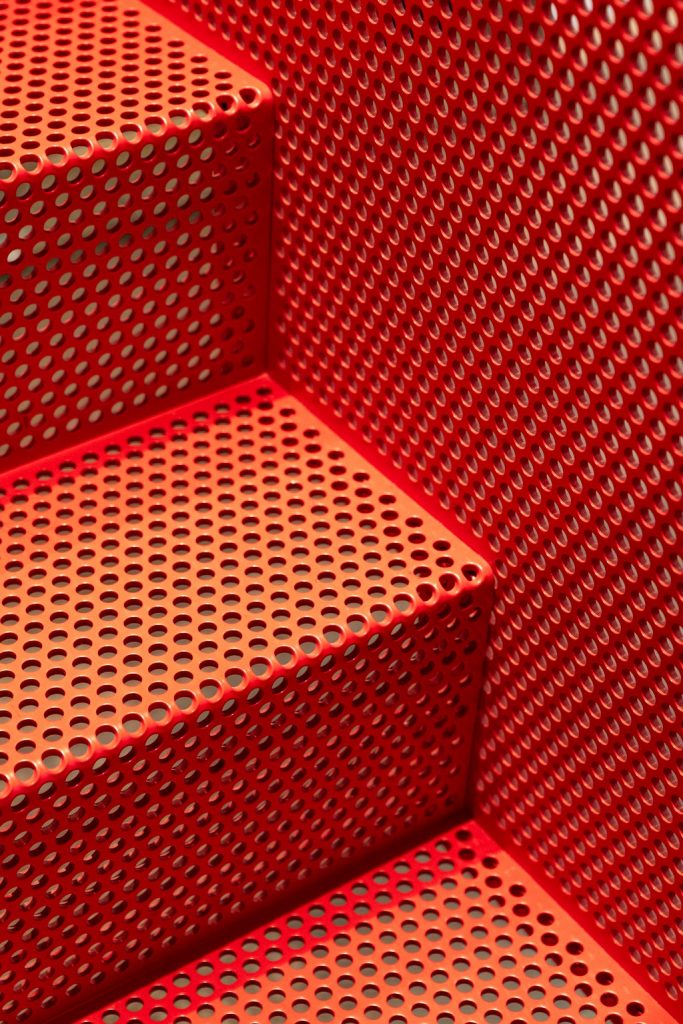
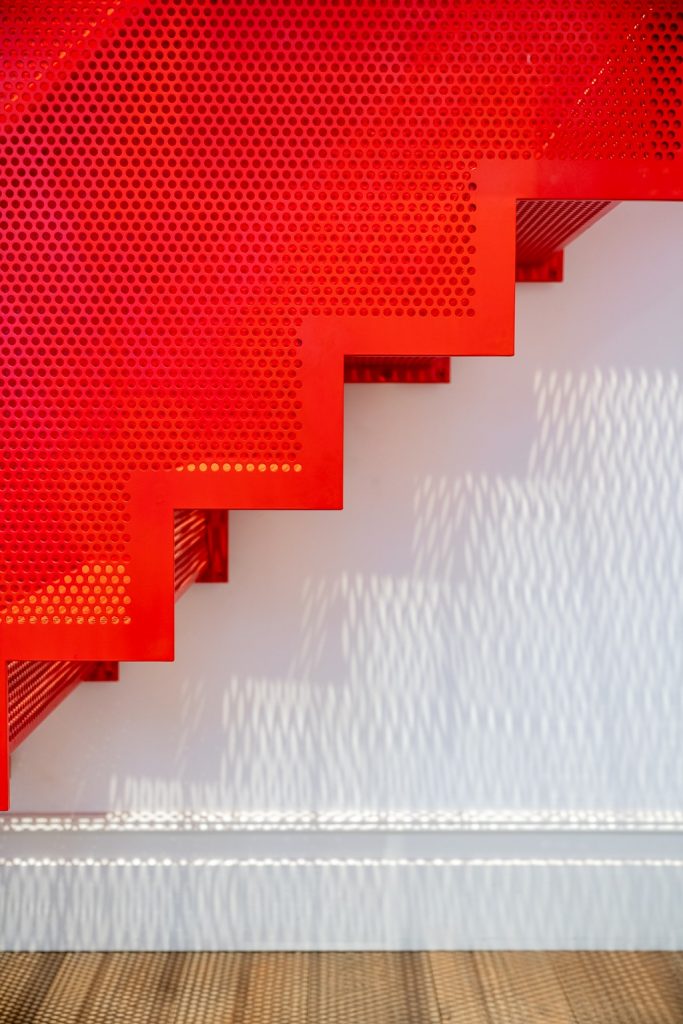
Elvaston by Michaelis Boyd
Collaborating with Diapo and Webb Yates Engineers, Michaelis Boyd met the challenge of retaining the functional integrity of a staircase for a family home.
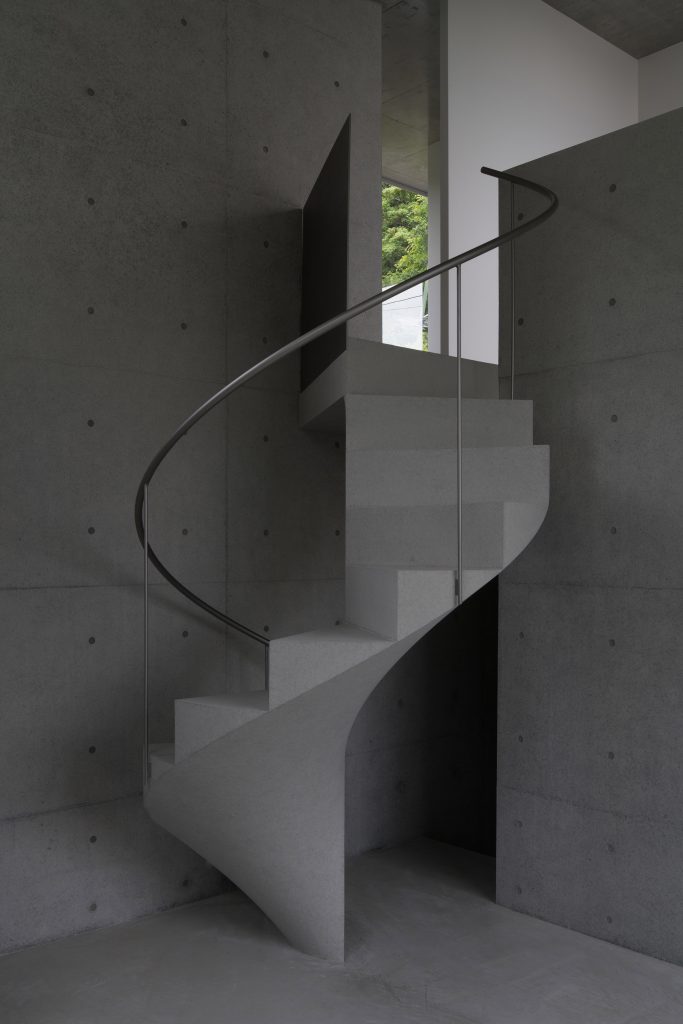
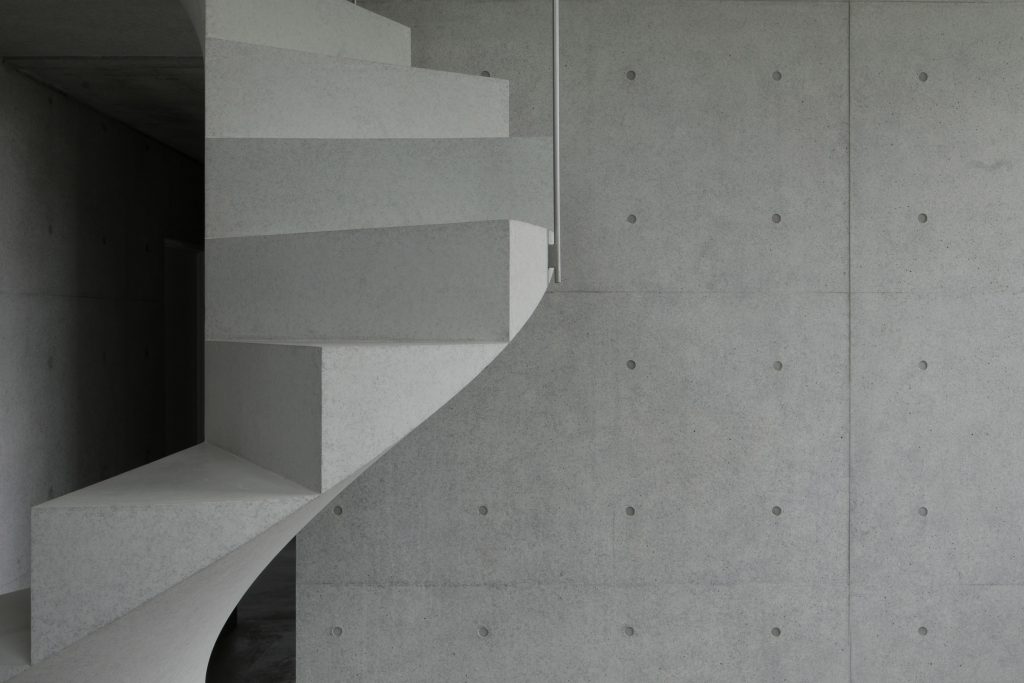
House in Ashiya by Kazunori Fujimoto Architects & Associates (also header image)
A spiral staircase is the central feature in a Japanese house designed by Kazunori Fujimoto Architects & Associates for a couple and their four children. Situated in a popular tourist destination in the Hyōgo prefecture, the house is split across two floors within two cuboidal volumes with minimal openings to block out sound from the neaby road. The curved lines of the staircase breaks this linear geometry, softening the rigidity of the interior.
The staircase is made nearly entirely of concrete. It was formed from a CNC-routed mould, transported to the site and cast in-situ as the house’s finishing touch. Going beyond its utilitarian function, the staircase is given spiritual significance as a yorishiro, which symbolises the unity of the family in this house. In the Shinto religion, this term is allocated to an object that will draw spirits in with a physical vessel to occupy.
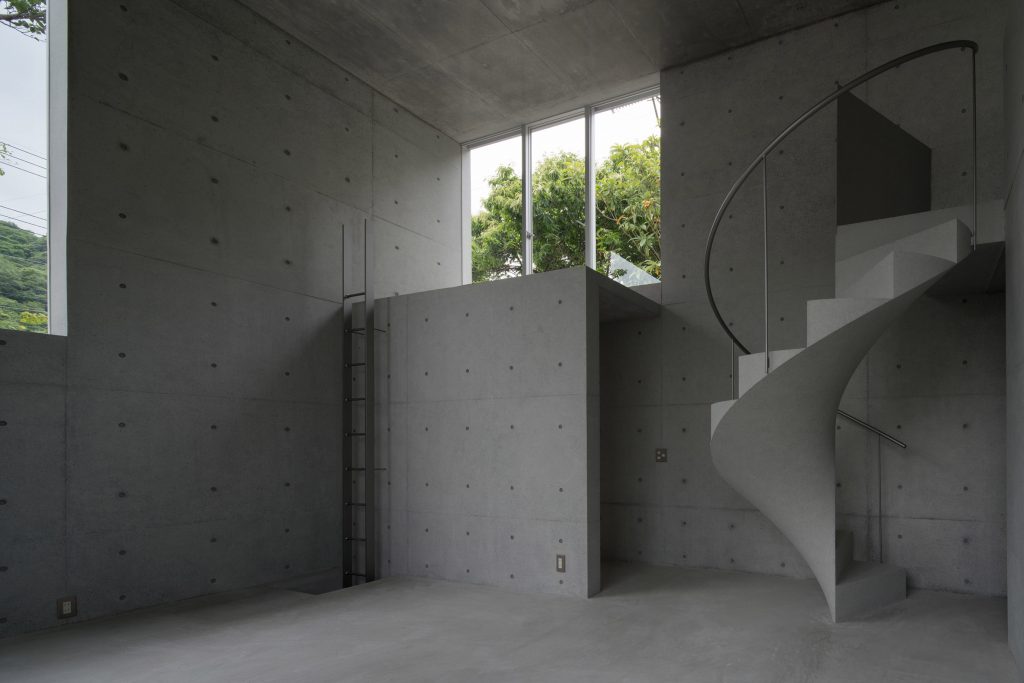
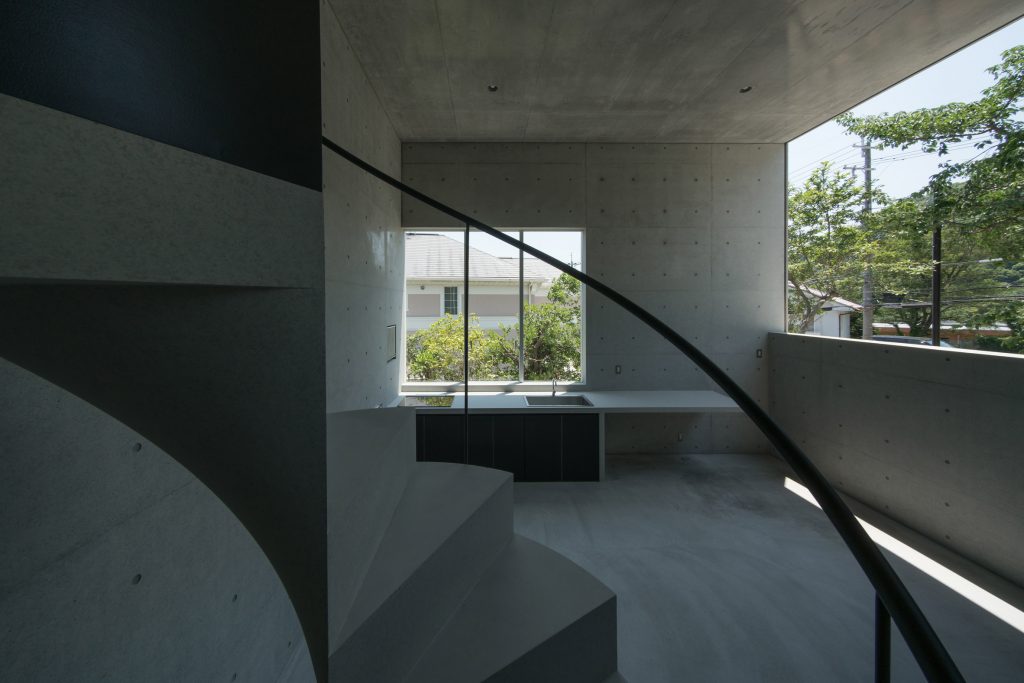
House in Ashiya by Kazunori Fujimoto Architects & Associates
Although designed to be the feature that defines the interior, the staircase occupies as little space as possible in the corner at the end of the corridor. This decision allowed for connective circulation space underneath the spiral, which leads to the master bedroom in the second volume.
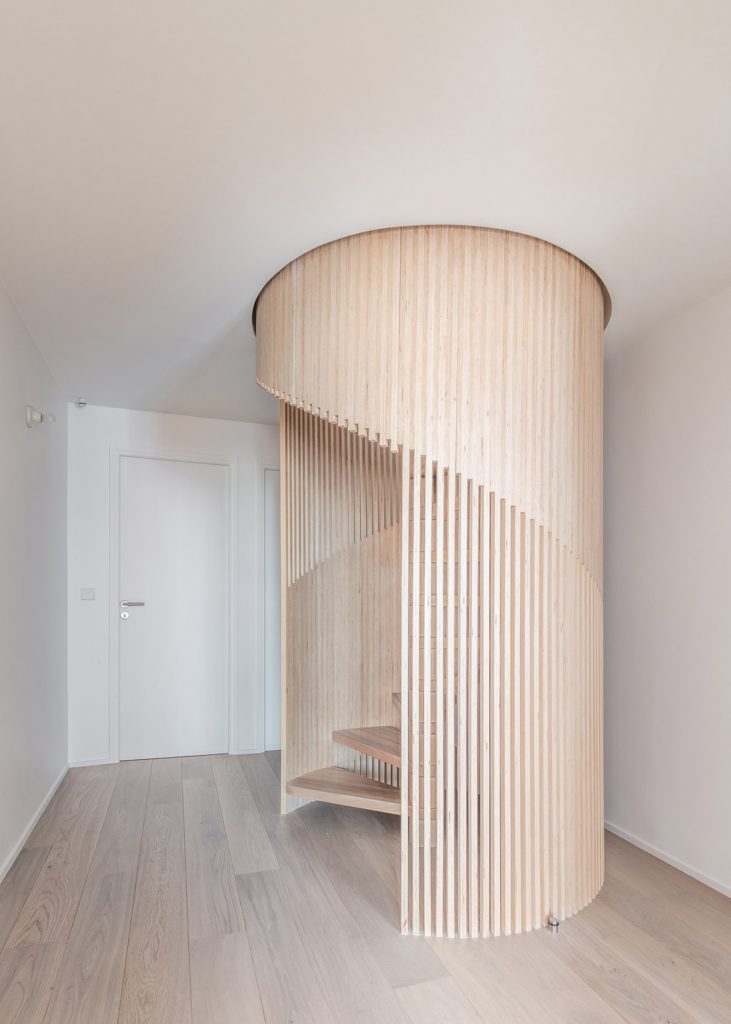
Sacha apartment by SABO Project
A cylindrical staircase is one of many standout details inside a Parisian duplex apartment by SABO project, architecture and design firm working in New York and Paris. Designing a space for a young couple expecting their first child, the team was driven by the idea of utilising a simple and humble material in a way that puts forward good custom design.
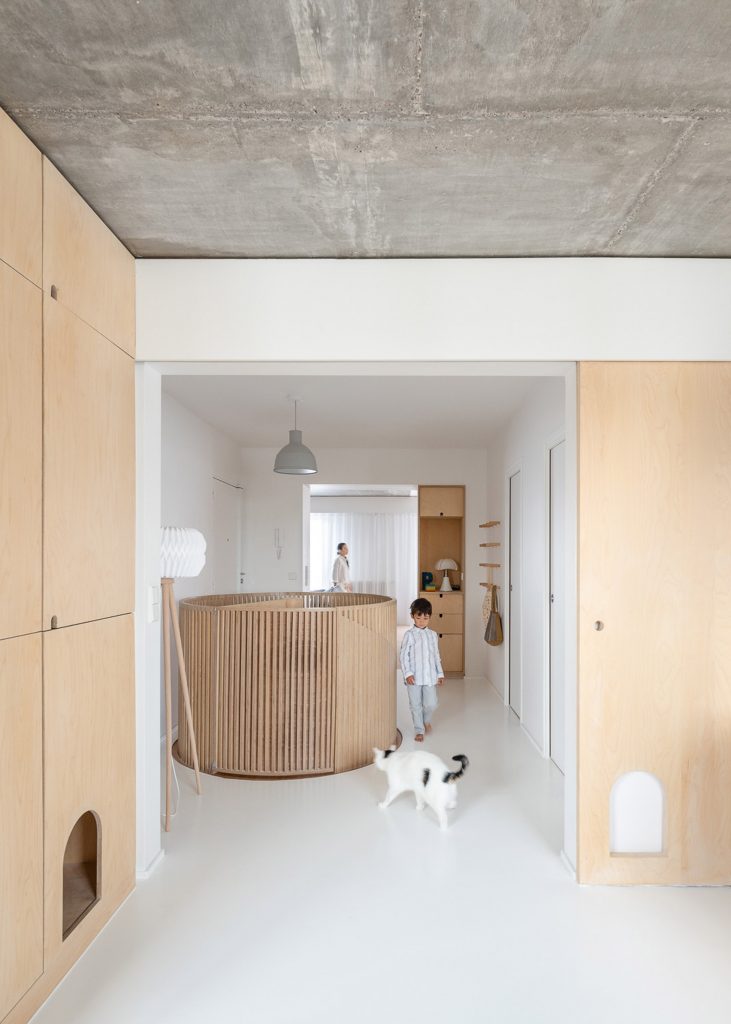
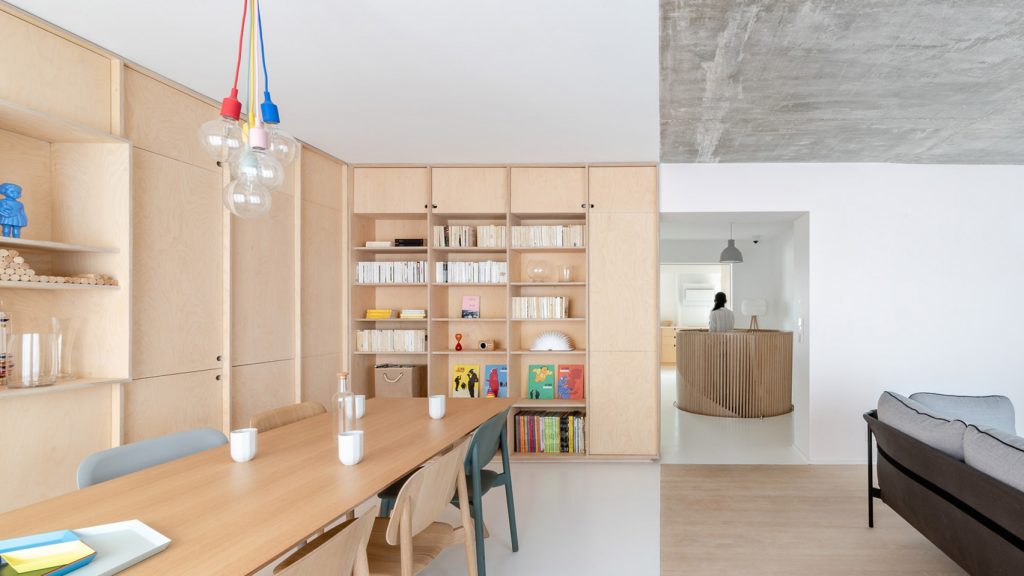
Sacha apartment by SABO Project
The lower floor accommodates bedrooms protected from neighboring noise, while the social upper floor benefits from unobstructed views of Paris. The main level is designed as a single open space within which areas are defined by a shared material set of Baltic birch plywood, white resin and existing concrete. The two floors are connected by a “child-proof” staircase made from thin slats of plywood. The device features a bespoke, removable safety gate that can be put in place as the baby gets to crawling and walking age. So far, the curved door around the spiral stairs helps keep the family cat away from the private rooms below.
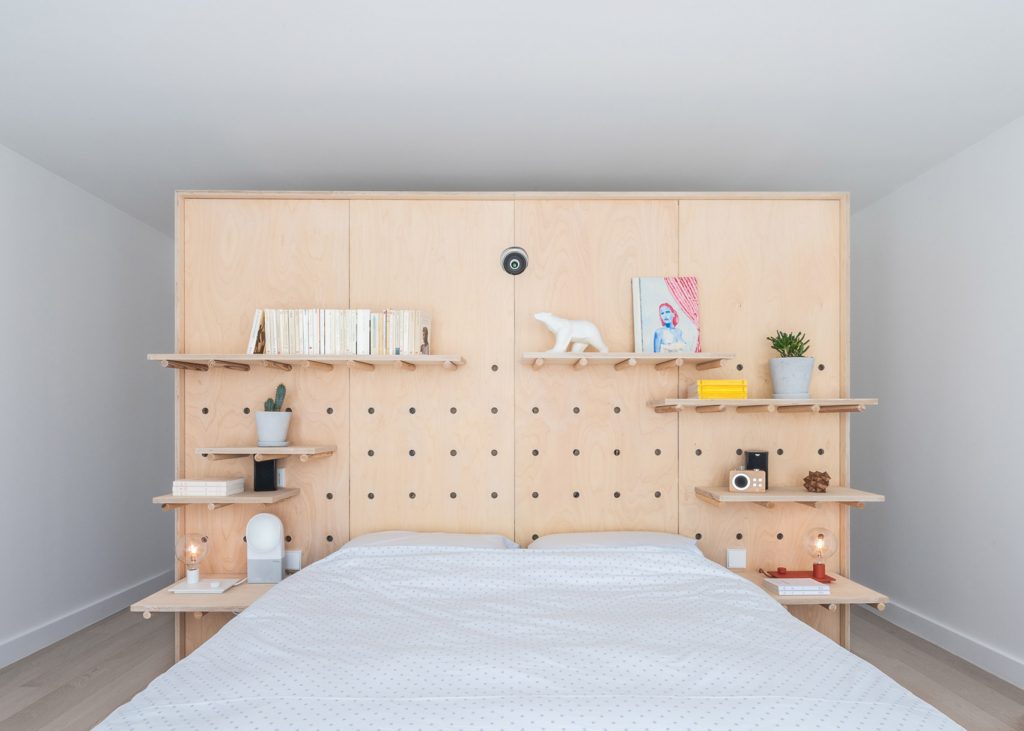
Sacha apartment by SABO Project
The cat has his home on the main floor where he can enter his house through dedicated arched openings within the kitchen sliding partition and cabinets. Other eye-catching features of the apartment include pegboard walls in the entrance, living room and master bedroom allowing for flexible display and storage.